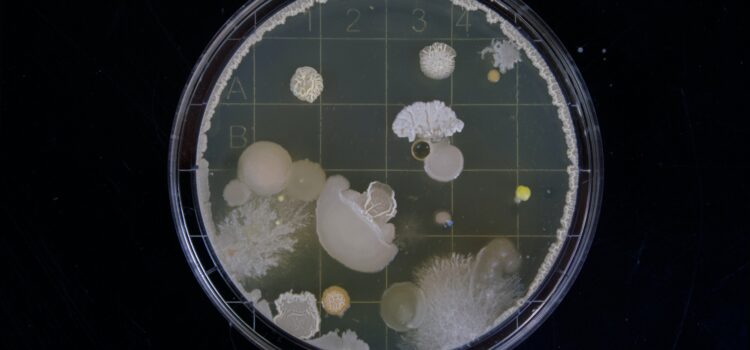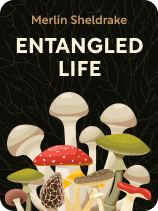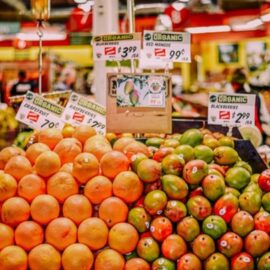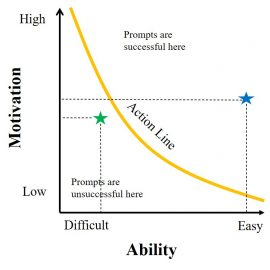

This article is an excerpt from the Shortform book guide to "Entangled Life" by Merlin Sheldrake. Shortform has the world's best summaries and analyses of books you should be reading.
Like this article? Sign up for a free trial here.
How does a fungus get energy? What kind of food do fungi eat?
Fungi have to eat just like everyone else. According to Merlin Sheldrake’s book Entangled Life, fungi acquire energy through eating and making partnerships with other organisms through symbiosis.
Check out how fungi get their energy below.
Energy Processing
All organisms acquire energy to fuel their growth, reproduction, and other processes. But how does a fungus get energy specifically? Sheldrake explains that fungi, like humans and other animals, are heterotrophs: Instead of producing their own food (as plants do), they acquire energy by eating other organisms. However, unlike humans and other animals, fungi digest food outside their bodies by absorbing nutrients through their mycelia.
(Shortform note: Sheldrake doesn’t explore in depth how fungi’s external digestion works. This process can be broken down into three steps. First, a fungus’s hyphae secrete digestive enzymes into its immediate environment, such as a decaying or dead plant. Second, the fungus’s mycelium absorbs the nutrients in the digested material through its cell walls. Third, the fungus stores the energy from these nutrients as glycogen.)
Throughout his book, Sheldrake highlights the variety of strategies fungi employ to access or ensnare food. Here we’ll explore two of these strategies: predation and symbiosis. Afterward, we’ll explore what mysteries still remain.
Strategy 1: Predation
According to Sheldrake, some fungi prey on other living organisms by trapping and then digesting them. For example, one type of predatory fungi ensnares nematode worms (also known as roundworms). Some of these fungi secrete a toxin that paralyzes nearby worms; then, the fungi enter the worms’ mouths and digest them from the inside. Other predatory fungi trap worms in sticky webs or grab them with hyphal protrusions.
(Shortform note: Researchers are exploring whether predatory fungi can help treat parasitic roundworms in animals’ digestive tracts. Several preliminary studies suggest that this treatment may be effective. These studies’ researchers claim that these treatments may be better than current, drug-based treatments for two reasons: 1) some roundworms have developed resistance to existing drug treatments, and 2) some of these drugs are toxic to animals.)
Strategy 2: Symbiosis
According to Sheldrake, other fungi acquire energy through symbiosis: close partnerships with other organisms called symbionts. While people use the term symbiosis colloquially to refer to mutually beneficial partnerships, Sheldrake and other scientists use this term to refer to any close partnership between organisms.
(Shortform note: While scientists typically use the word “symbiosis” to describe close partnerships between organisms, biologist Richard Dawkins contends that there’s also a symbiotic partnership within every organism. In The Selfish Gene, he argues that genes are in a symbiotic relationship with their organisms. This is because genes first arose, and continue existing, because they self-replicate. Replication typically happens through reproduction, so genes that code for traits that support reproduction continue to replicate. Dawkins calls this a symbiotic relationship because organisms wouldn’t exist without their genes, and their genes wouldn’t continue existing without the organisms that ensure their replication.)
Let’s examine the role fungi play in two types of symbiosis: parasitism and mutualism.
Parasitism: Some symbiotic relationships involving fungi are parasitic: one symbiont benefits from the partnership at the expense of another. For instance, the aforementioned Ophiocordyceps forms a parasitic relationship with the ants it invades and eventually kills.
(Shortform note: Both predation and parasitism involve one organism harming another—so what’s the difference? With predation, the predatory and prey don’t share a physical body until the steps of ensnarement and digestion (such as when a predatory fungus captures and digests a nematode worm). By contrast, parasitic organisms live most of their life cycle within or on their victim’s body. For instance, the life cycle of Ophiocordyceps begins when an ant steps on a fungal spore, continues as the fungus feeds on the ant’s innards, and ends after the fungus explodes from the ant’s body and releases new spores.)
Mutualism: Other symbiotic relationships involving fungi are mutualistic, meaning all symbionts benefit. Lichen—those pale green, scaly coatings on trees and rocks—embody a mutualistic relationship. What we refer to as lichen is actually more than one organism: It’s a fungus, plus one or more photosynthetic partners (such as algae). In this mutualistic relationship, the fungal tissue provides physical protection for the smaller, photosynthetic organisms it houses. In return, the fungi absorb the complex sugars that its symbionts produce through photosynthesis.
(Shortform note: Some authors use lichen and other mutualistic relationships as models of human behavior. For instance, in Braiding Sweetgrass, indigenous biologist Robin Wall Kimmerer argues that lichen can inspire you to practice mutual care with fellow humans as well as other living things. Kimmerer defines mutual care as behaving in a way that simultaneously supports you, other people, and other organisms. She claims that lichens represent a harmonious union characterized by reciprocal care—a union we can strive to replicate in our marriages and other relationships.)
What We Still Don’t Know
According to Sheldrake, there’s a lot we don’t yet know about symbiotic partnerships involving fungi.
For example, we’re only beginning to understand how mycorrhizal fungi—fungi that live within the roots of plants—negotiate their partnership with their symbionts. Mycorrhizal fungi feed on the carbon that plants produce through photosynthesis. In return, these fungi increase plants’ access to underground minerals and water and defend them against disease.
Citing research from ecologist Suzanne Simard, Sheldrake explains that plants supply the most carbon to the mycorrhizal fungi that provide the most nutrients and water. It’s as if these two symbionts are part of a bartering economy in which one symbiont says, “If you give me more of this, I’ll give you more of that.” Exactly how plants and mycorrhizal fungi communicate and adjust the quantities of “goods” they trade remains a mystery.
Simard’s research on fungal symbionts also raises questions about how mycorrhizal fungi support trees, specifically. Her research demonstrates that trees communicate “warning signals” and share resources with other trees using mycorrhizal networks. According to Sheldrake, there’s still much to discover about how trees send each other messages via mycorrhizal networks and how it might benefit fungi to connect trees to each other.
The Value of Long-Term Research on Fungal Symbionts
In Finding the Mother Tree, Simard argues that the more we know about the symbiotic relationship between trees and mycorrhizal fungi, the better we can support the long-term health of forests.
According to Simard, we need to transition from traditional forest management—which overlooks the role fungi play in sustaining long-term forest health—to sustainable forest management that takes these relationships into account.
In traditional forest management, loggers cut down large swaths of forest, then they plant fast-growing trees that are ideal for quickly producing salable timber. This approach may not do significant damage in the short term, but it can disrupt complex underground relationships in the long term, harming the health of forested areas even beyond those cleared for logging.
By contrast, in sustainable forest management, foresters base their logging and replanting decisions on long-term research about mycorrhizal fungi and tree health. Under this type of forest management, loggers may be able to both turn a profit and preserve the underground symbiotic relationships in which mycorrhizal fungi provide trees with nutrients, water, and disease resistance and enable trees to communicate with each other.

———End of Preview———
Like what you just read? Read the rest of the world's best book summary and analysis of Merlin Sheldrake's "Entangled Life" at Shortform.
Here's what you'll find in our full Entangled Life summary:
- An examination of what we know and don't know about fungi
- How fungi can help solve many modern-day problems
- The three most important benefits of fungi






